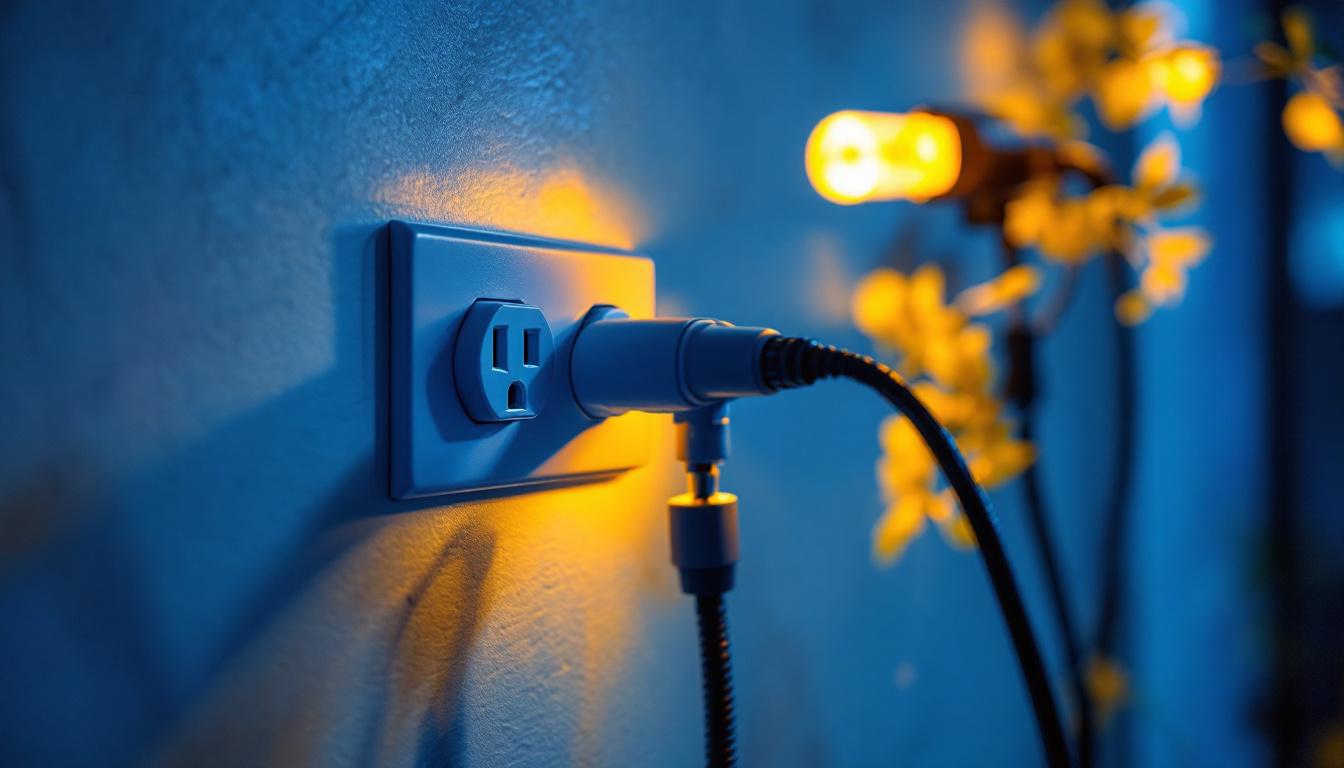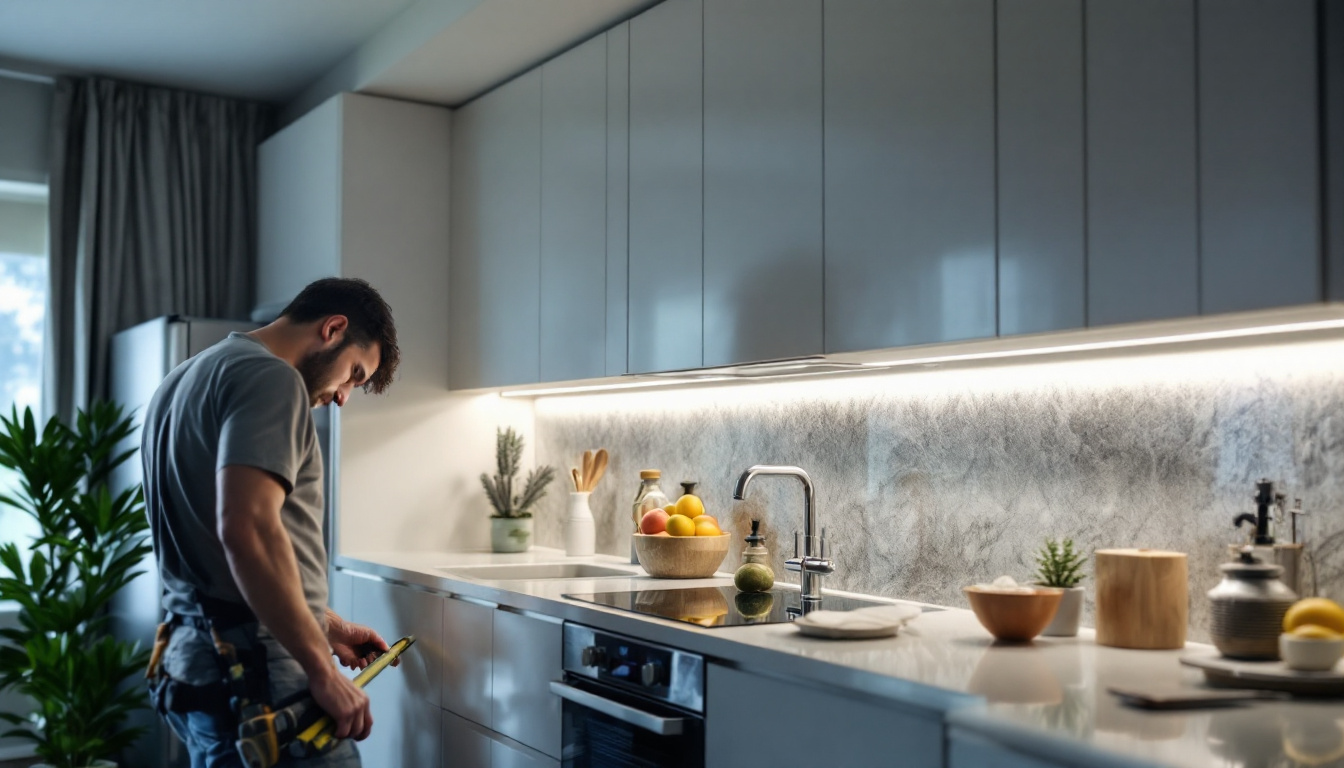
In the realm of lighting design and installation, floor lighting often takes a backseat to more prominent fixtures. However, its potential to enhance both aesthetics and functionality cannot be overlooked. This article delves into the various ways floor lighting can elevate lighting installation projects, offering insights for contractors looking to expand their design repertoire.
Floor lighting serves multiple purposes in a space, from providing ambient illumination to accentuating architectural features. By understanding its significance, contractors can better advise clients on how to utilize this often-underestimated element.
One of the most compelling reasons to incorporate floor lighting is its ability to enhance the visual appeal of a space. Whether it’s a sleek modern design or a cozy traditional setting, strategically placed floor lights can create a warm and inviting atmosphere. This type of lighting can highlight textures, colors, and shapes in a way that overhead lighting simply cannot.
For instance, using floor-mounted fixtures to illuminate a textured wall or a piece of artwork can draw the eye and create a focal point in the room. This not only enhances the overall design but also allows for a more personalized touch in lighting installations. Additionally, the use of dimmable floor lights can further enhance the ambiance, allowing homeowners to adjust the brightness according to the time of day or the mood they wish to create. The interplay of light and shadow can transform a mundane space into a captivating environment, inviting guests to explore and appreciate the nuances of the design.
Beyond aesthetics, floor lighting plays a crucial role in functionality. It can improve visibility in areas where overhead lighting may be insufficient, such as hallways, staircases, or outdoor pathways. Properly installed floor lights can reduce the risk of accidents by providing clear sightlines, particularly in spaces where shadows may obscure hazards.
Furthermore, floor lighting can be used to define spaces within larger areas. For example, in an open-concept home, floor lights can help delineate the dining area from the living space, creating a sense of organization and flow. This zoning effect not only aids in navigation but also enhances the usability of each area, allowing for a seamless transition between different activities. Moreover, the strategic placement of floor lighting can create a layered lighting effect, combining ambient, task, and accent lighting to achieve a well-balanced illumination that caters to various needs throughout the day. This thoughtful approach to lighting design can significantly elevate the functionality and comfort of a space, making it more adaptable to the lifestyle of its occupants.
Understanding the different types of floor lighting available can help contractors make informed decisions when planning installations. Each type has its unique advantages and can be used in various applications.
Recessed floor lighting is a popular choice for modern designs. These fixtures are installed flush with the floor, providing a sleek and unobtrusive look. They can be used to create a continuous line of light along corridors or to accentuate architectural features without taking up additional space.
Recessed lighting is particularly effective in areas where minimalistic design is desired. It can be integrated seamlessly into the floor, allowing for a clean aesthetic that complements other design elements. Furthermore, these fixtures can be equipped with dimmers, enabling users to adjust the brightness according to the time of day or the mood they wish to create. This adaptability makes recessed floor lighting not only a stylish choice but also a practical one for various settings, from residential homes to commercial spaces.
Floor lamps and portable fixtures offer flexibility and versatility in lighting design. These standalone pieces can be moved to different locations as needed, allowing for dynamic lighting solutions that can adapt to changing needs. They are ideal for creating cozy reading nooks or providing additional light in areas that may require more illumination.
Moreover, the variety of styles available means that contractors can select fixtures that align with the overall design theme of the space. From industrial to contemporary, the right floor lamp can serve as both a functional light source and a decorative element. Additionally, many modern floor lamps come with features such as adjustable heights, multiple light settings, and even smart technology integration, allowing users to control their lighting remotely or set schedules for automated illumination. This makes them not only a practical choice but also a stylish statement piece in any room.
Under-furniture lighting is another innovative approach to floor lighting. By placing LED strips or small fixtures beneath sofas, beds, or cabinets, contractors can create a soft glow that adds depth to a room. This type of lighting not only enhances the ambiance but also serves a practical purpose by illuminating areas that may otherwise be dark.
Additionally, under-furniture lighting can make a space feel larger and more open by creating a floating effect. This technique is especially beneficial in smaller rooms where maximizing space is crucial. The subtle illumination can also guide movement through a space, reducing the risk of accidents in dimly lit areas. Furthermore, with the advent of color-changing LED technology, under-furniture lighting can be customized to suit various moods or occasions, allowing homeowners to transform their living spaces with just the touch of a button. This versatility not only enhances the aesthetic appeal but also adds a layer of functionality that is increasingly sought after in modern interior design.
When planning floor lighting installations, several design considerations must be taken into account. These factors can significantly impact the effectiveness and overall success of the project.
The placement of floor lighting is critical to achieving the desired effect. Contractors should consider the layout of the space and how light will interact with various surfaces. For instance, placing lights too close to walls may create harsh shadows, while positioning them at an angle can help disperse light more evenly.
In addition, understanding the purpose of the lighting is essential. If the goal is to highlight a specific feature, such as a piece of art or a textured wall, the placement should be adjusted accordingly to ensure maximum impact.
Choosing the right color temperature and brightness level is another vital aspect of floor lighting design. Warm white light can create a cozy and inviting atmosphere, while cooler tones may be more suitable for modern or minimalist spaces. Contractors should work closely with clients to determine their preferences and the desired mood of the space.
Moreover, dimmable options can provide additional flexibility, allowing users to adjust the brightness based on the time of day or specific activities. This adaptability can enhance the overall experience of the space.
In today’s eco-conscious environment, energy efficiency is a significant consideration for any lighting project. LED floor lighting options are increasingly popular due to their longevity and low energy consumption. By recommending energy-efficient solutions, contractors can help clients save on utility bills while also reducing their environmental footprint.
Additionally, integrating smart lighting systems can further enhance energy efficiency. These systems allow users to control their lighting remotely, set schedules, and even adjust settings based on occupancy, ensuring that lights are only used when needed.
Floor lighting can be effectively utilized in a variety of settings, each requiring a tailored approach to design and installation. Understanding the specific needs of different spaces can help contractors create successful lighting solutions.
In residential settings, floor lighting can transform the ambiance of living rooms, bedrooms, and outdoor areas. In living rooms, for example, floor lamps or recessed lighting can create a warm and inviting atmosphere for relaxation or entertaining guests. In bedrooms, under-bed lighting can provide a soft glow that enhances the room’s tranquility.
Outdoor spaces also benefit from floor lighting, particularly in patios and walkways. Pathway lights can guide guests safely while adding a decorative touch to landscaping.
In commercial environments, floor lighting can enhance both functionality and aesthetics. Retail stores can use floor lighting to highlight merchandise displays, drawing customers’ attention to specific products. In offices, floor lighting can improve visibility in workspaces while also contributing to a modern and professional look.
Moreover, in hospitality settings such as restaurants and hotels, floor lighting can create a welcoming atmosphere that enhances the overall guest experience. The right lighting can set the mood for dining or relaxation, making it an essential element in these spaces.
As with any aspect of design, floor lighting is subject to evolving trends. Staying informed about current styles and technologies can help contractors remain competitive and offer clients the latest innovations.
Smart lighting solutions have gained immense popularity in recent years. These systems allow users to control their floor lighting through mobile apps or voice commands, providing unparalleled convenience and customization. Contractors should consider incorporating smart technology into their lighting installations to meet the growing demand for connected homes and businesses.
Additionally, smart lighting can enhance energy efficiency, as users can easily manage their lighting usage and set schedules based on their routines.
Another trend in floor lighting is the use of sustainable materials and designs. As consumers become more environmentally conscious, there is a growing demand for lighting fixtures made from recycled or eco-friendly materials. Contractors can differentiate themselves by offering sustainable options that align with clients’ values.
Furthermore, designs that prioritize longevity and energy efficiency contribute to sustainability efforts, making them appealing choices for modern consumers.
Floor lighting is a versatile and impactful element that can significantly enhance lighting installation projects. By understanding its importance, types, design considerations, and applications, contractors can create spaces that are not only functional but also visually stunning.
As trends continue to evolve, staying informed and adapting to new technologies will be crucial for success in the lighting industry. Embracing floor lighting as a key component of design can lead to innovative solutions that meet the diverse needs of clients, ultimately elevating the quality of lighting installations across various settings.
Ready to elevate your lighting installation projects with the transformative power of floor lighting? At LumenWholesale, we provide contractors with an exceptional range of high-quality, spec-grade lighting products at unbeatable wholesale prices. Say goodbye to local distributor markups and hello to superior lighting solutions that meet the highest industry standards. With our hassle-free bulk buying and free shipping, you can access premium lighting at the best value — all without hidden fees or compromises. Enhance your designs with the quality, affordability, and convenience that LumenWholesale offers. Wholesale Lighting at the Best Value is just a click away.

Discover why lighting contractors should prioritize wall outlet receptacles in their projects.

Discover essential tips from lighting contractors on effectively integrating a switch with an outlet.

Discover the frequent pitfalls lighting contractors face when installing under cabinet strip lights.

Discover why purchasing shop lights in bulk from local distributors might not be the best choice.